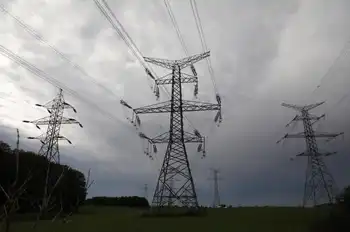CEA urges U.S. policy review to promote stronger cross-border grid
OTTAWA, Ontario - - In conjunction with U.S. Secretary of Energy Dr. Ernest MonizÂ’s visit to Ottawa this week, the Canadian Electricity Association CEA is offering recommendations on how to further enhance the benefits presented by the robust level of integration between the U.S. and Canadian electric power systems.
Secretary MonizÂ’s trip will feature a strategic dialogue with senior government officials and energy stakeholders from Canada and the United States on the U.S. Department of EnergyÂ’s DOE Quadrennial Energy Review QER. Launched in January 2014, the QER is an effort to comprehensively assess U.S. energy policy, with a focus on transmission, storage and distribution infrastructure.
As part of the dialogue, CEA will highlight how the dynamic cross-border relationship on electricity can be a platform for addressing many of the pressing challenges to North America’s energy future – including the need for massive renewal of electricity infrastructure across the continent, and the imperative to transition to a lower-carbon economy.
The Canadian and U.S. transmission networks are physically interconnected at over 30 points, forming a highly integrated North American grid. Between six and 10 percent of CanadaÂ’s generation is exported to the U.S. each year. These linkages offer numerous advantages to both countries: higher levels of reliable service efficiencies in system operation and fuel management opportunities to use power from nearby markets to address local contingencies and expanded access to low-carbon, competitively-priced resources.
“We are in the midst of a historic transformation of the energy system in North America, especially as it relates to the integrated electric grid,” said CEA President and CEO Jim Burpee. “Many of the challenges to ensuring safe and reliable electricity supply and delivery for future generations are unprecedented. Annual requirements for new investment in infrastructure are at all-time highs, while customer expectations for a cleaner and more innovative system continue to grow. Fortunately, the long-standing partnership between Canada and the United States on electricity serves as a means to mitigate these challenges and develop solutions collaboratively, rather than in isolation.”
CEA explored these themes further in formal comments on the QER filed today with DOE. The submission examined how strengthened bilateral integration can help advance the core goals underlying the QER.
Related News

COVID-19 pandemic zaps electricity usage in Ontario as people stay home
TORONTO - Demand for electricity in Ontario last year fell to levels rarely seen in decades amid shifts in usage patterns caused by pandemic measures, new data show.
The decline came despite a hot summer that had people rushing to crank up the air conditioning at home, the province’s power management agency said.
“We do have this very interesting shift in who’s using the energy,” said Chuck Farmer, senior director of power system planning with the Independent Electricity System Operator.
“Residential users are using more electricity than we thought they would and the commercial consumers are using less.”
The onset of the pandemic last…




